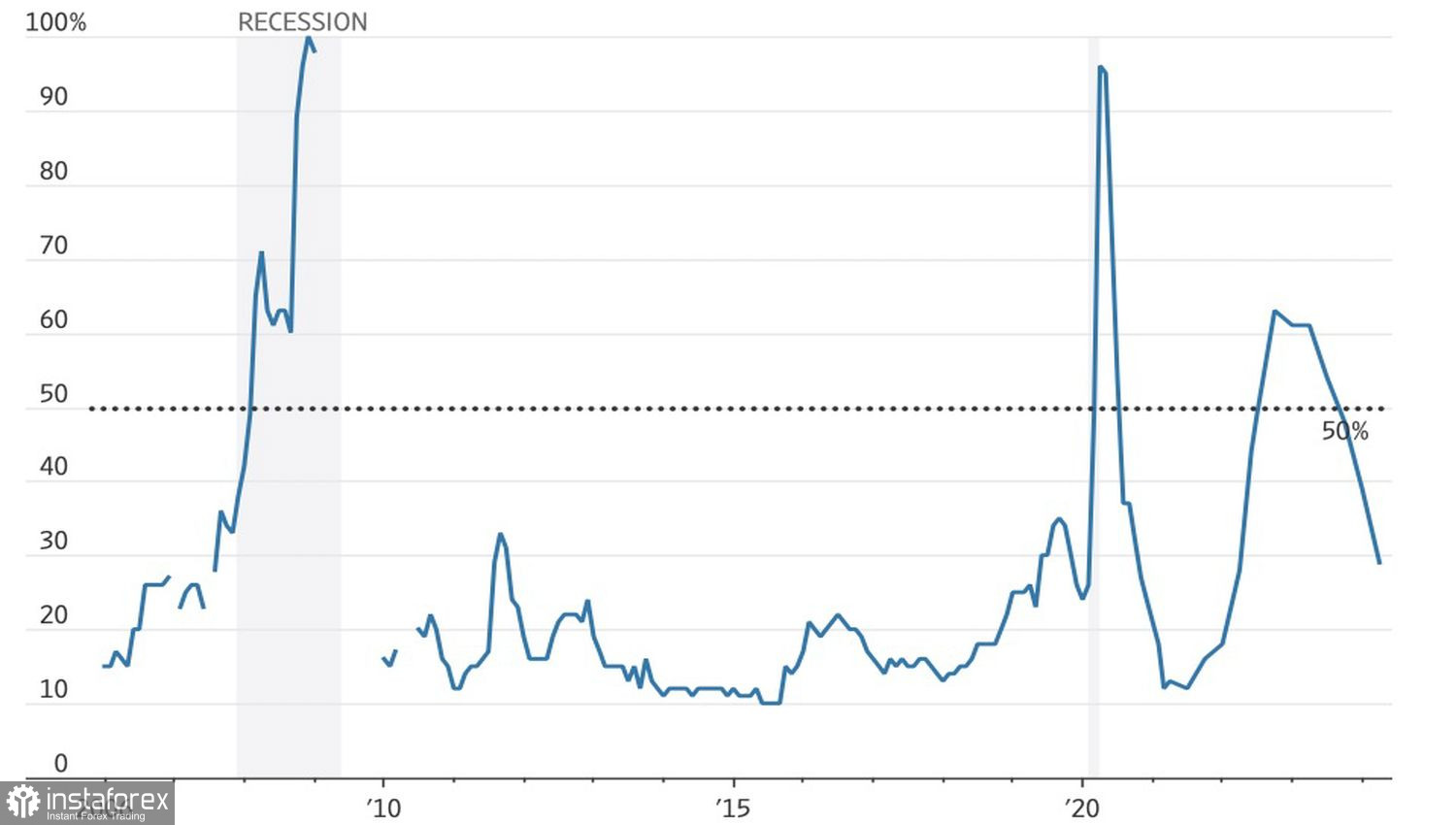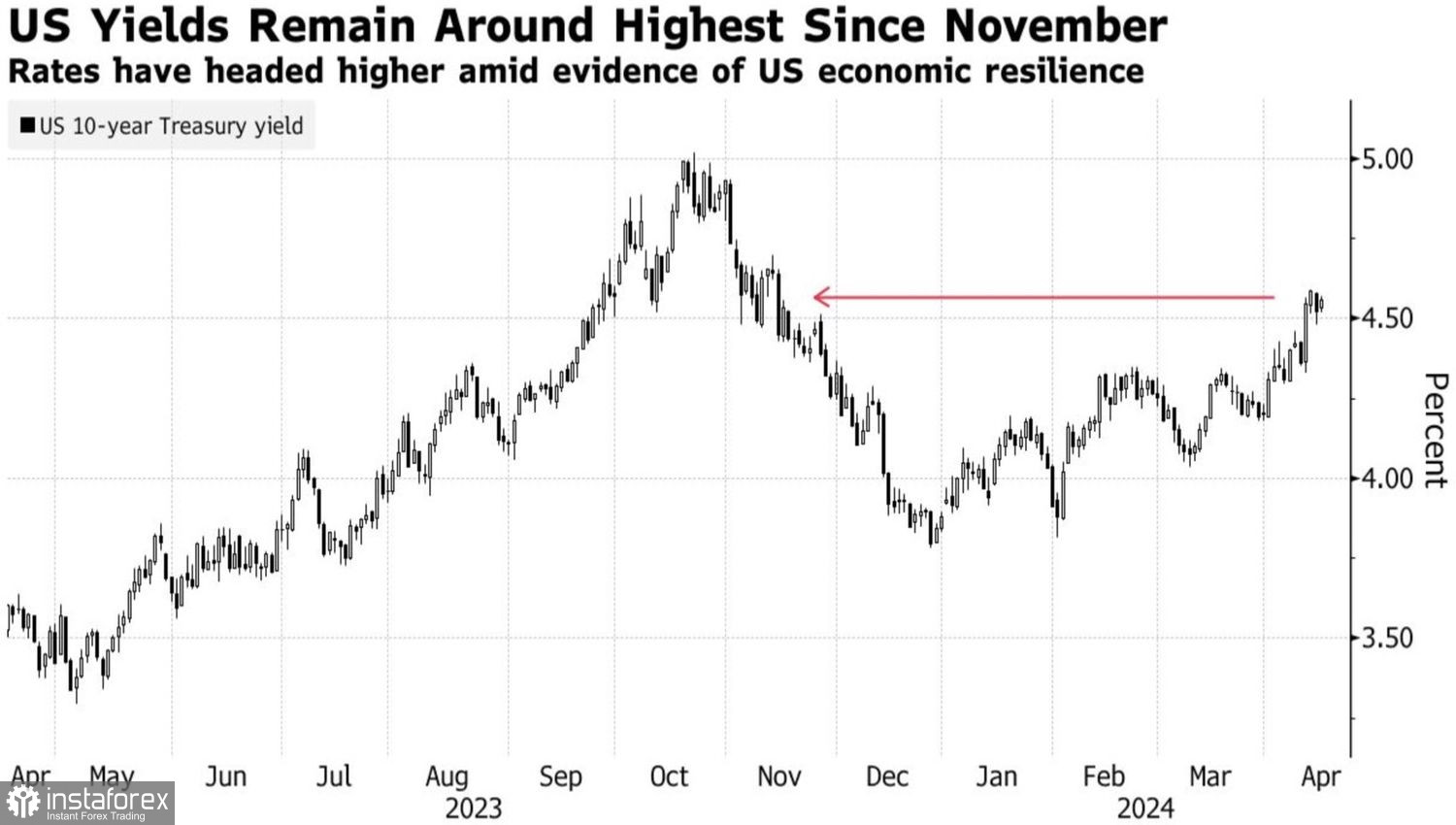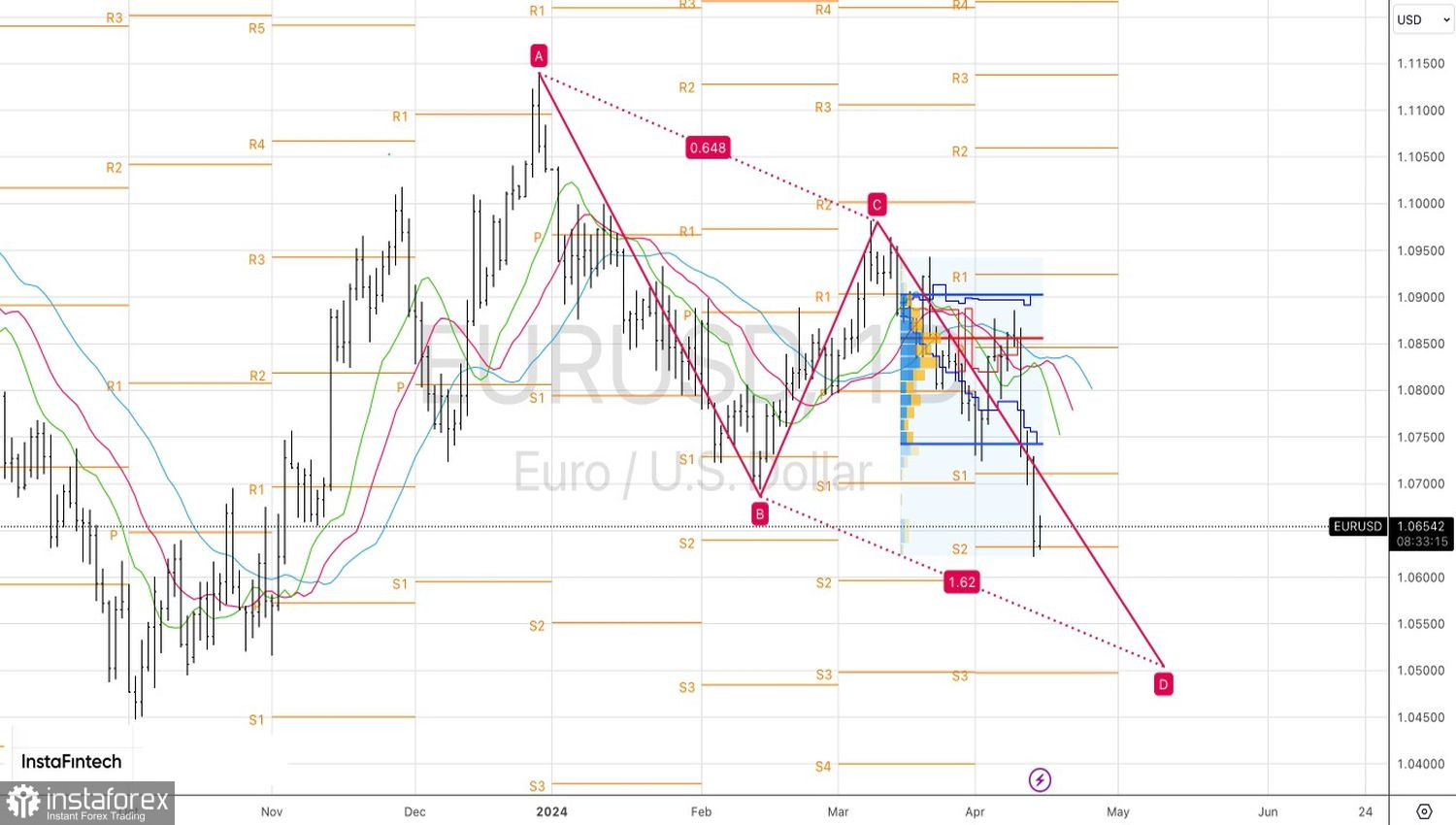What is permissible for Jupiter may not be permissible for a bull. In the updated forecasts of Wall Street Journal experts, the figure of 2.2% for the U.S. GDP in 2024 is mentioned. European Central Bank specialists surveyed believe that the eurozone economy will expand by 0.5% this year. American domestic demand is much stronger than European, creating conditions for accelerating inflation and forcing the Fed to keep rates plateaued for a long period. This is all the better for the bears on EUR/USD.
Economists at the Wall Street Journal have reduced the chances of a recession in the U.S. from 39% in the January survey to 29%. This is the lowest level since April 2022. They expect the Fed to cut the federal funds rate three times this year, and inflation in the form of the Personal Consumption Expenditures Index to reach 2.5% by the end of 2024.
Dynamics of the probability of recession in the U.S. economy

Meanwhile, after the release of consumer price data in the States, FOMC officials began to backtrack on their March plans. For instance, Federal Reserve Bank of Boston President, Susan Collins, believes the federal funds rate will only be cut twice in 2024. Her colleague from the San Francisco Fed, Mary Daly, sees no urgency in easing monetary policy and asserts that the Fed still has a lot of work ahead.
American exceptionalism, the persistence of holding borrowing costs at 5.5%, and loose fiscal policy in the U.S. are the main components of the dollar's success recipe. It leads the currency race among the Big Ten, and there are no signs of a change in leadership.
It should be noted that the drop in EUR/USD to its lowest levels since early November was driven not only by the different pace of monetary expansion by the Fed and the ECB but also by geopolitics. By the end of the working week on April 12, markets were preparing for an Iranian airstrike on Israel, speculating on how much oil would rise in such a scenario, and buying safe-haven assets, including the U.S. dollar.
However, in reality, the devil turned out to be not as black as he was painted. 99% of missiles and drones were shot down, and no one was hurt. As a result, Brent plummeted below $90 per barrel, and bears on EUR/USD closed part of their positions. This led to a retreat in the main currency pair. However, at the same time, the yield on U.S. Treasury bonds rose, strengthening the position of the U.S. dollar.
Dynamics of U.S. Treasury Yields


Currently, the spread between U.S. and German debt market rates is at its highest levels since 2019, indicating the stability of the downward trend in EUR/USD. The downward movement of the main currency pair is based on a solid foundation, so pullbacks should be used for selling.
Technically, on the daily chart, EUR/USD has seen a rebound from the area of 5-month lows. However, the target at 161.8% according to the AB=CD pattern has not been canceled and is located at the 1.05 mark. It makes no sense to refuse to sell the euro against the U.S. dollar. Previous strategies of forming shorts on pullbacks remain relevant.
 English
English 
 Русский
Русский Bahasa Indonesia
Bahasa Indonesia Bahasa Malay
Bahasa Malay ไทย
ไทย Español
Español Deutsch
Deutsch Български
Български Français
Français Tiếng Việt
Tiếng Việt 中文
中文 বাংলা
বাংলা हिन्दी
हिन्दी Čeština
Čeština Українська
Українська Română
Română

